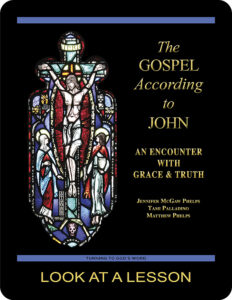forgiveness
 One of the great promises of Christianity is the forgiveness of sins. The Old Testament offered a stay of judgment through the sacrifice of animals in various rites all designed to delay or to defer the death that results from sin. The animal would serve as a substitute for the person who had committed the sin. In Christianity, a better substitute was found, and so the forgiveness of sins can be brought to perfection. It can be beneficial to reflect on how exactly that forgiveness works.
One of the great promises of Christianity is the forgiveness of sins. The Old Testament offered a stay of judgment through the sacrifice of animals in various rites all designed to delay or to defer the death that results from sin. The animal would serve as a substitute for the person who had committed the sin. In Christianity, a better substitute was found, and so the forgiveness of sins can be brought to perfection. It can be beneficial to reflect on how exactly that forgiveness works.
The Bible uses different images including God not recording, remembering, or accounting for our sins. It is as though they never happened. In many places in the New Testament, including in the Letter to the Hebrews and The Acts of the Apostles, the Greek word used to describe forgiveness is ἀφίημι (aphiemi), which means “send away.” The important point is that sins don’t just vanish or cease to be even by the act of God. Following the form of the Old Testament rites of sacrifice, sin must be sent somewhere and the debt paid.
The change enacted by Christianity is that Jesus Christ himself took the place of the sacrifice and assumed the guilt and punishment due for all of our sins. When we say that sins are forgiven, it is essential that we remain mindful that forgiveness always comes at a cost even if we aren’t the ones who are paying that cost.
related topics: condemn; forgiveness in Matthew’s gospel; healing; sin
you also may like our study of the Gospel According to John
 The Gospel According to John: An Encounter with Grace & Truth, a 25-lesson Catholic Bible study with an imprimatur, examines the Fourth Gospel’s view of Jesus Christ as the Son of God, with special emphasis on the institution of the sacraments of the Church as the means by which Christians are purified and made holy. This recently revised study includes maps and additional commentary, and takes a closer look at the way in which Jesus relates to individual men and women. Click on the book’s cover to view a sample lesson.
The Gospel According to John: An Encounter with Grace & Truth, a 25-lesson Catholic Bible study with an imprimatur, examines the Fourth Gospel’s view of Jesus Christ as the Son of God, with special emphasis on the institution of the sacraments of the Church as the means by which Christians are purified and made holy. This recently revised study includes maps and additional commentary, and takes a closer look at the way in which Jesus relates to individual men and women. Click on the book’s cover to view a sample lesson.
 Click on the picture of the statue of Moses with horns (above) to learn more about Lost in Translation. A new entry is archived each Monday. Contact us to receive Lost in Translation by email every week. You may use any of the contact links on our website to ask Matthew a question.
Click on the picture of the statue of Moses with horns (above) to learn more about Lost in Translation. A new entry is archived each Monday. Contact us to receive Lost in Translation by email every week. You may use any of the contact links on our website to ask Matthew a question.
